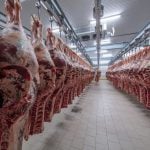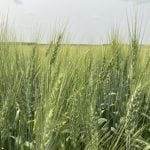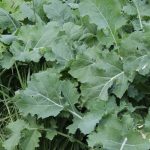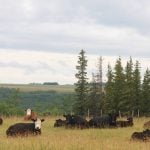
Silage

Rain aids some Saskatchewan crops
Soil moisture largely adequate
There was some relief for crops in Saskatchewan following sporadic showers. The provincial agriculture department said farmers are hoping for more rain to aid head and pod filling, but the weekly crop report for the week ended July 28 noted that more moisture wouldn’t help the yields for more advanced crops.

Manitoba crops advancing nicely despite below normal moisture
About 50 to 70 per cent of normal precipitation
Crops in Manitoba continue to develop at a good pace despite a lack of rainfall in some parts of the province, reported Manitoba Agriculture on July 2.

Rye silage: From the field to feedlot
Nutrition: Evaluating how barley silage and rye silage compare in feed quality
Acres seeded to hybrid rye as a source of silage for feedlot cattle in Canada and the U.S. have increased in recent years. Increased use of hybrid rye as a forage source may be driven by greater yield potential relative to conventional rye and the early harvest may allow for double cropping. In some areas, […] Read more

No recipe, only guidelines, to cover crops
There are many factors to consider when growing cover crops
More farmers and ranchers are looking at cover crops for many reasons, ranging from animal health, to reducing erosion, to capturing moisture. But how can people make them work on their operation? Kevin Elmy sees the benefits of a more hands-on approach to cover crop management. Through Cover Crops Canada, he talks with farmers and […] Read more

Over a hundred years of ranching along the Battle River
The Solverson family’s ancestors settled near Camrose, Alta., in the 1880s, and they’re still ranching in the area today
Ranching in the middle of central Alberta’s grain country, with inches-deep topsoil and flat, open fields, may not be traditional cattle country, but it has worked for the Solverson family for more than a century. Ranching amongst their mainly grain farming neighbours does have its benefits, said brothers Dave and Ken Solverson of Camrose, Alta. […] Read more

Winter feeding tips for beef cows in late gestation
Transitioning late gestation cows to higher-quality forages is a good strategy
As we begin the New Year and enter the coldest months, many beef cows are in the final third of their gestation period. This is when the fetus experiences its most significant growth. To support this development and ensure the birth of a healthy calf, it is essential to provide the cow with proper nutrition. […] Read more

Mongolian company turns to Canada for agricultural expertise
Mongolia is behind in technology, but borders on huge markets, motivating those working in agriculture to learn as much as they can
When you think of Mongolia, you likely don’t think about how it may be similar to Canada. Instead, you might think about its vast wilderness or mountain ranges that run into the frigid Gobi Desert. You may know of the traditional culture of Mongolian nomads or the history of the Mongol Empire. Though there are […] Read more

Alltech’s mycotoxin testing rates corn silage as riskier in 2024
News Roundup from the December 2024 issue of Canadian Cattlemen
Alltech’s 2024 Canadian Harvest Analysis revealed significant regional variability in contamination levels in silages and grains, said the company in a press release. Early harvest testing suggests corn silage may be a higher-risk commodity across Canada, says Alltech. Barley may have a greater prevalence of mycotoxins, and in higher concentrations, than wheat. At press time, […] Read more

Comparing feed performance in pregnant cows
Research on the Record with Reynold Bergen
Last month’s column featured a University of Saskatchewan research trial that used high-moisture corn grain, snaplage or silage to partially replace barley grain or silage in finishing diets. While the steers were in the feedlot, this team wintered cows on the corn stover. See: Performance and ruminal fermentation of second-trimester pregnant beef cows fed short-season […] Read more

What do the modernized ‘Feeds Regulations’ mean for cattle producers?
The long-awaited “Feeds Regulations, 2024,” were published on July 3, 2024, marking the most significant legislative change for the livestock feed sector in 40 years. Industry and government stakeholders worked collaboratively to modernize these regulations for over a decade. This work was motivated by a need to better align Canada’s regulatory framework with modern-day industry […] Read more



